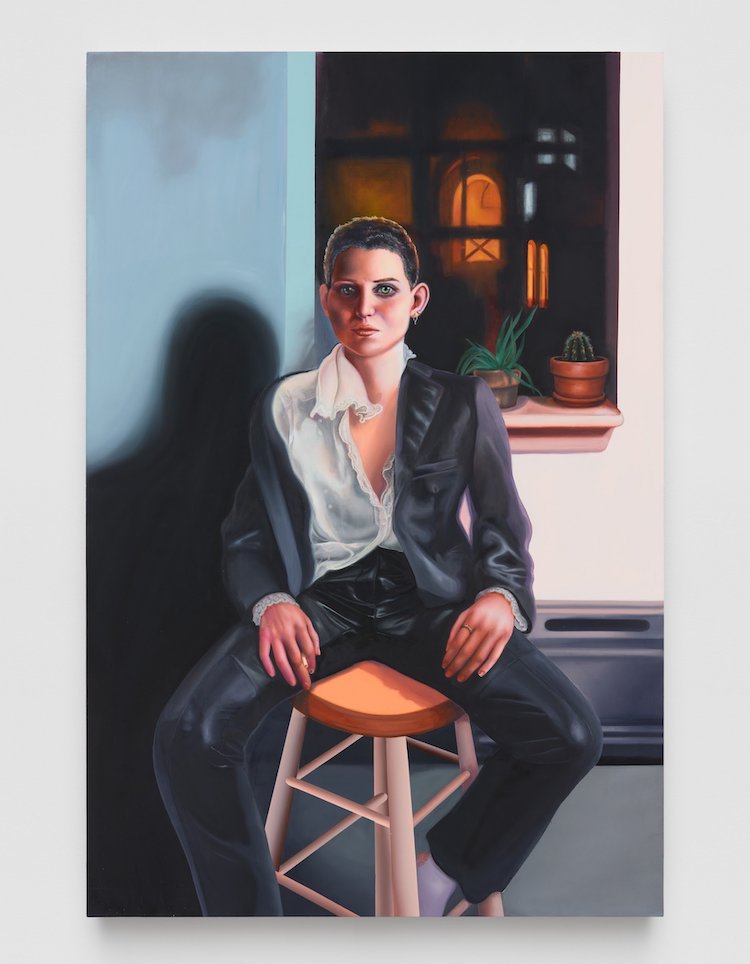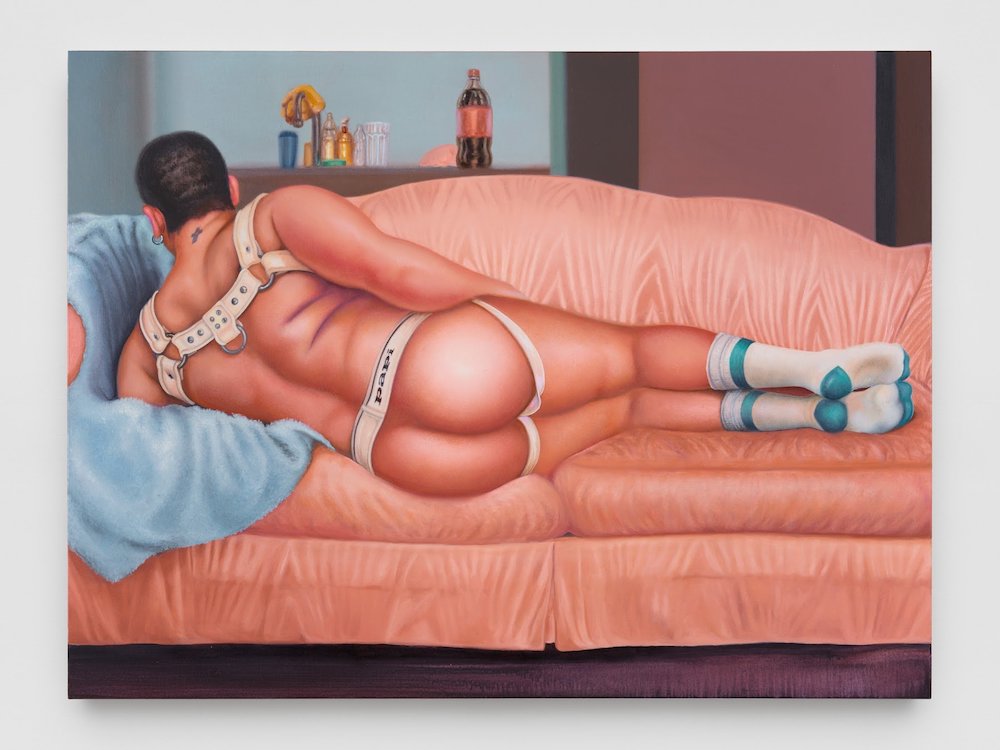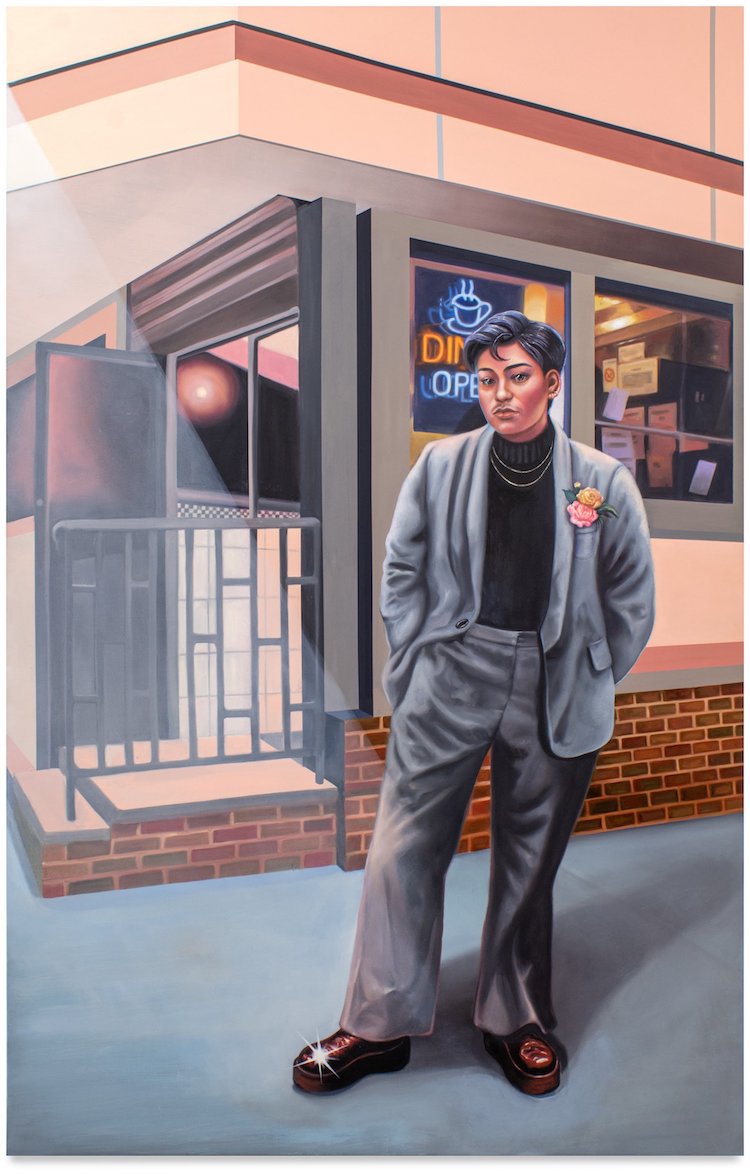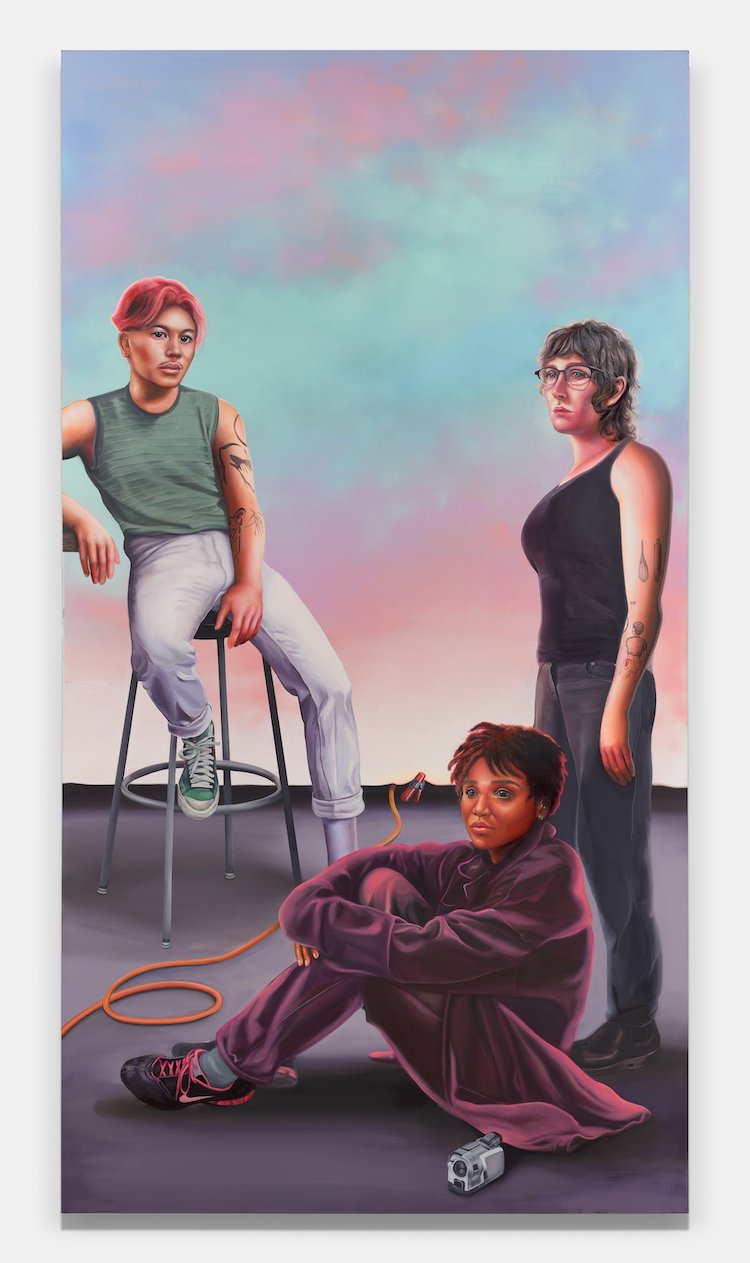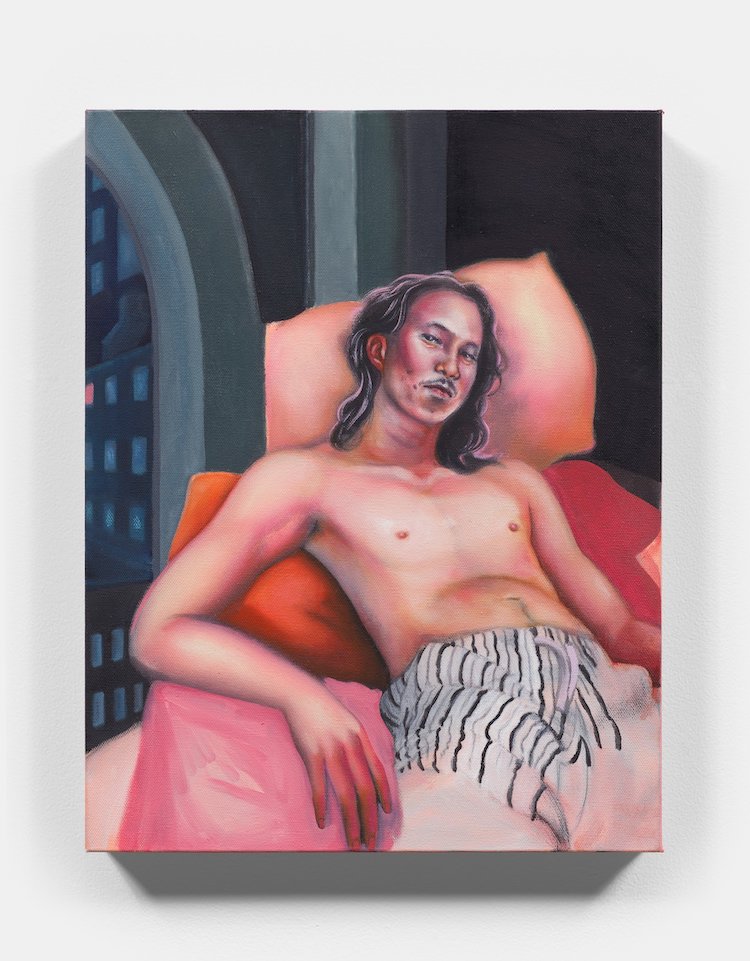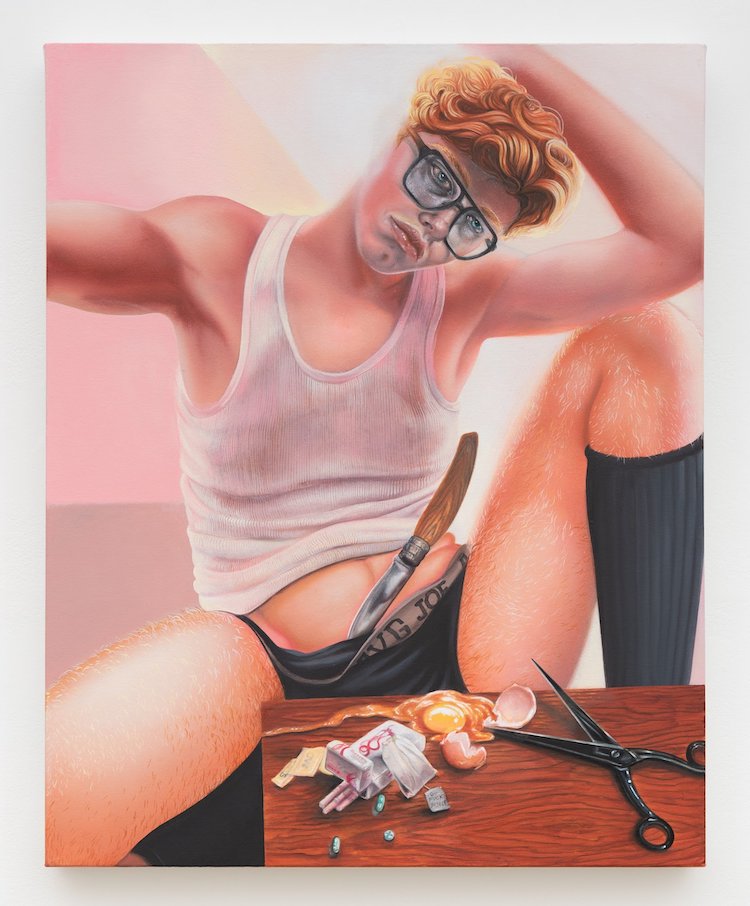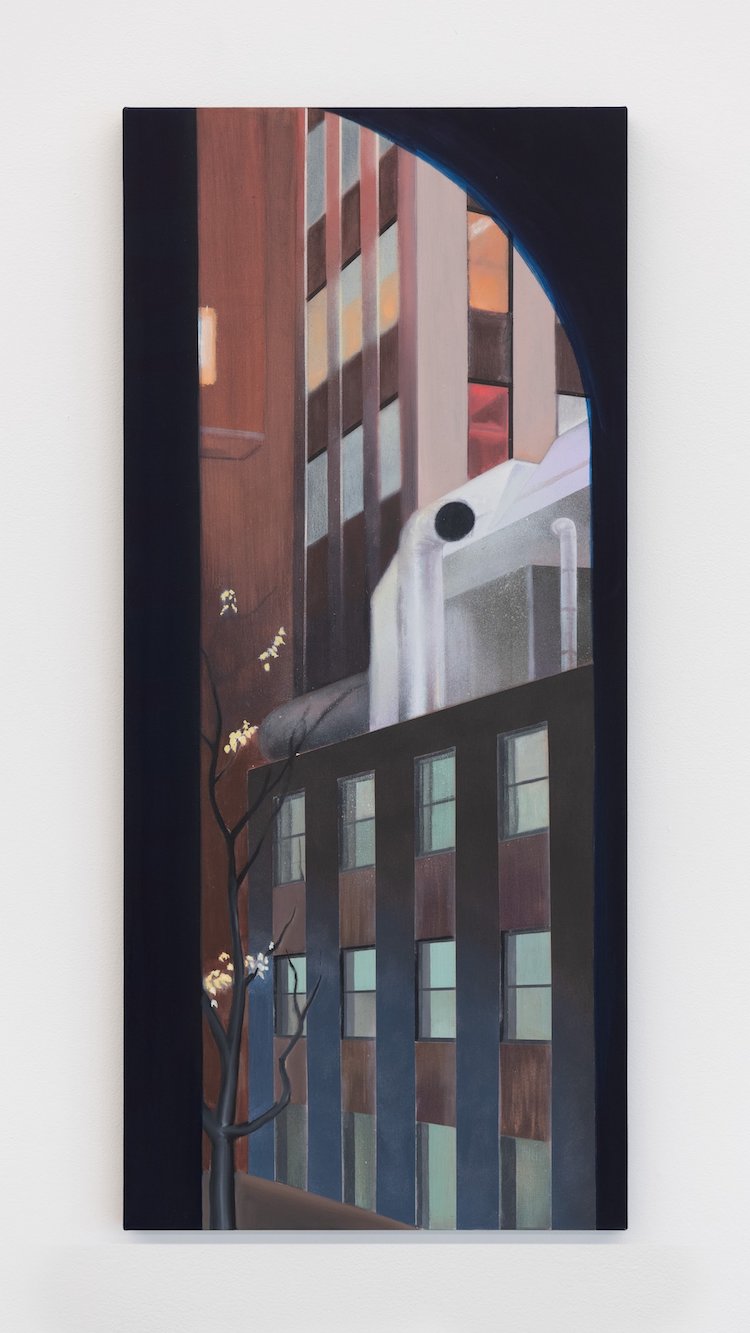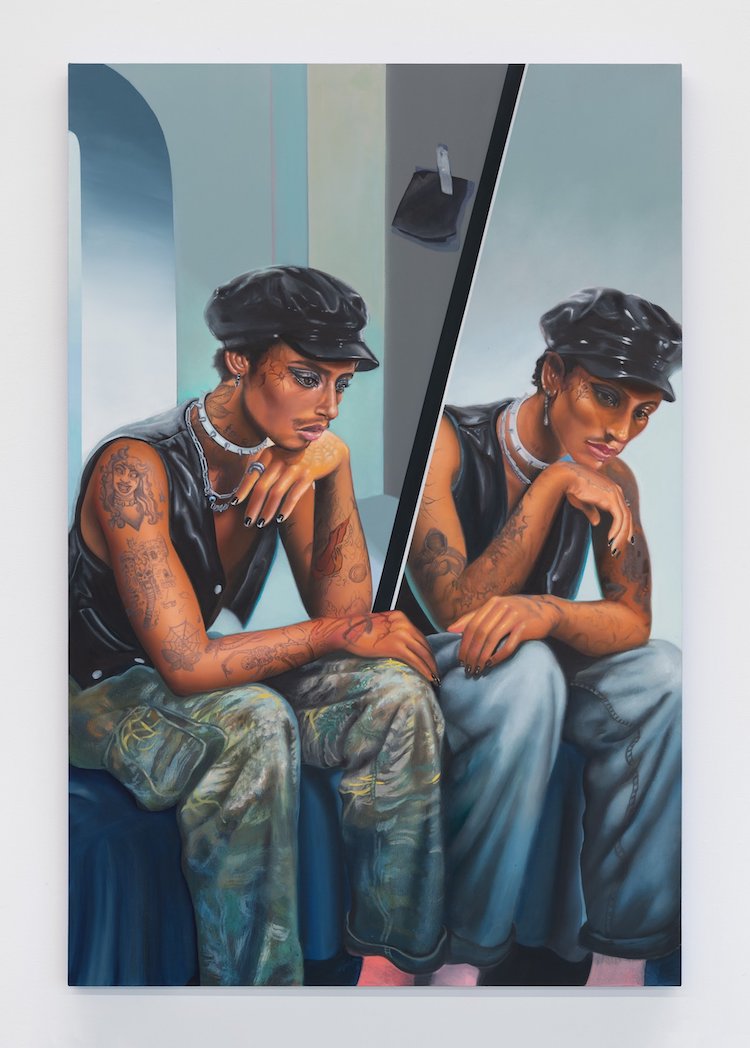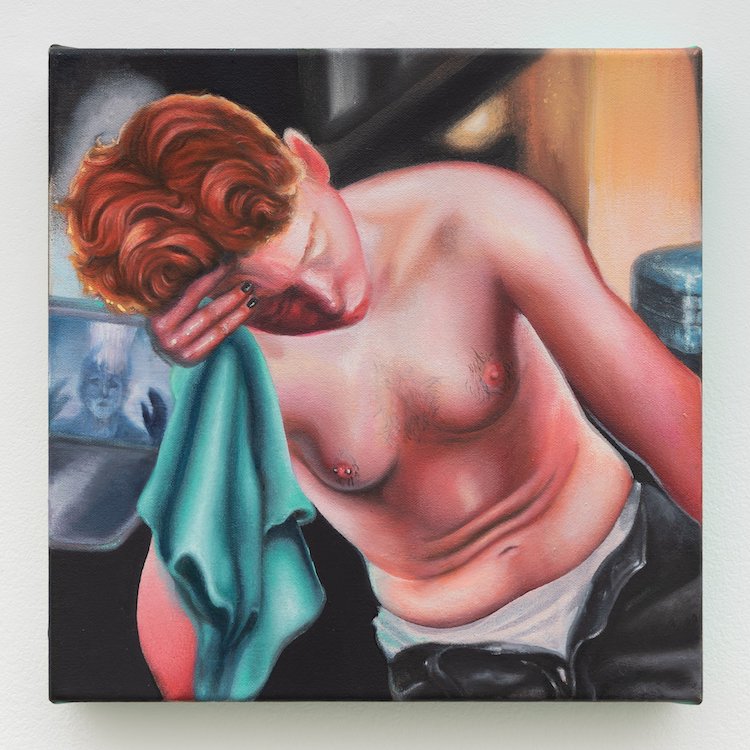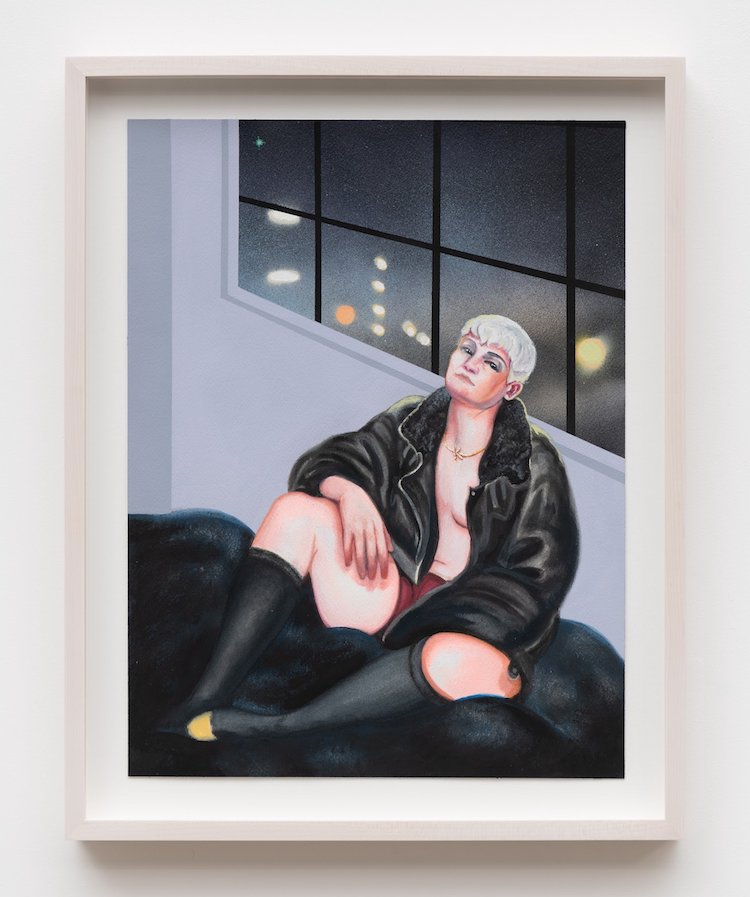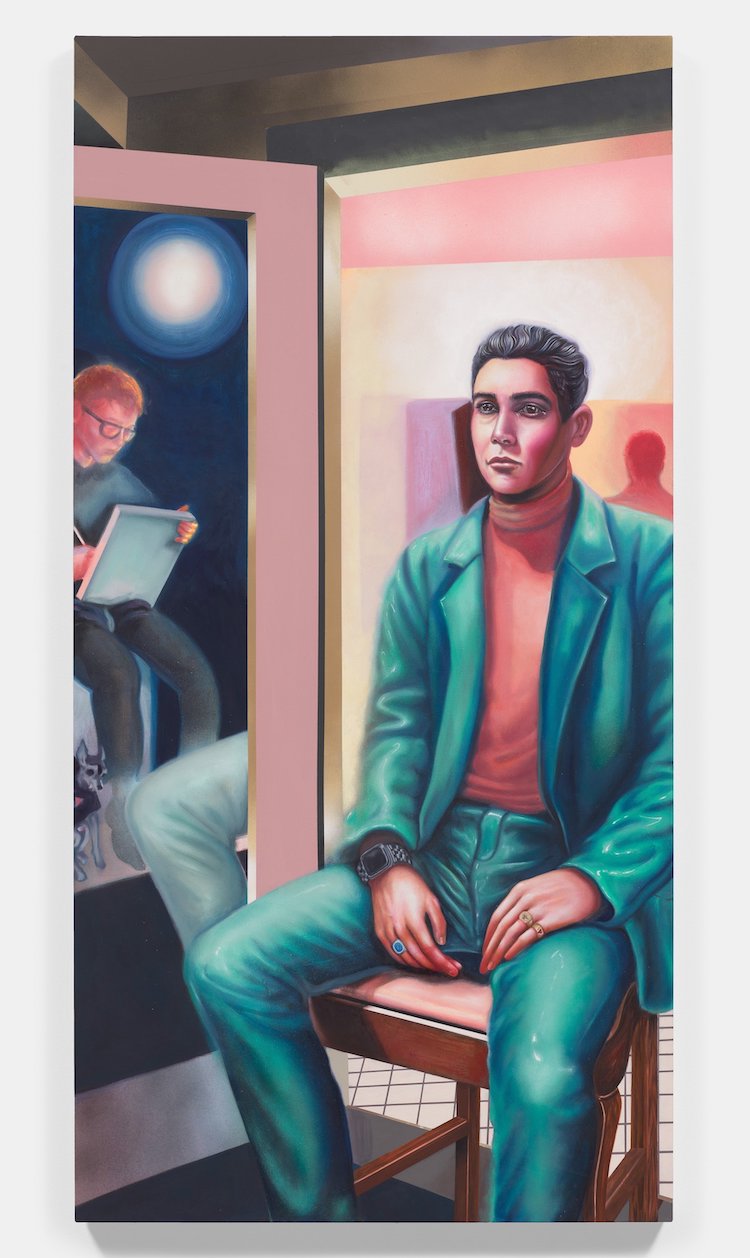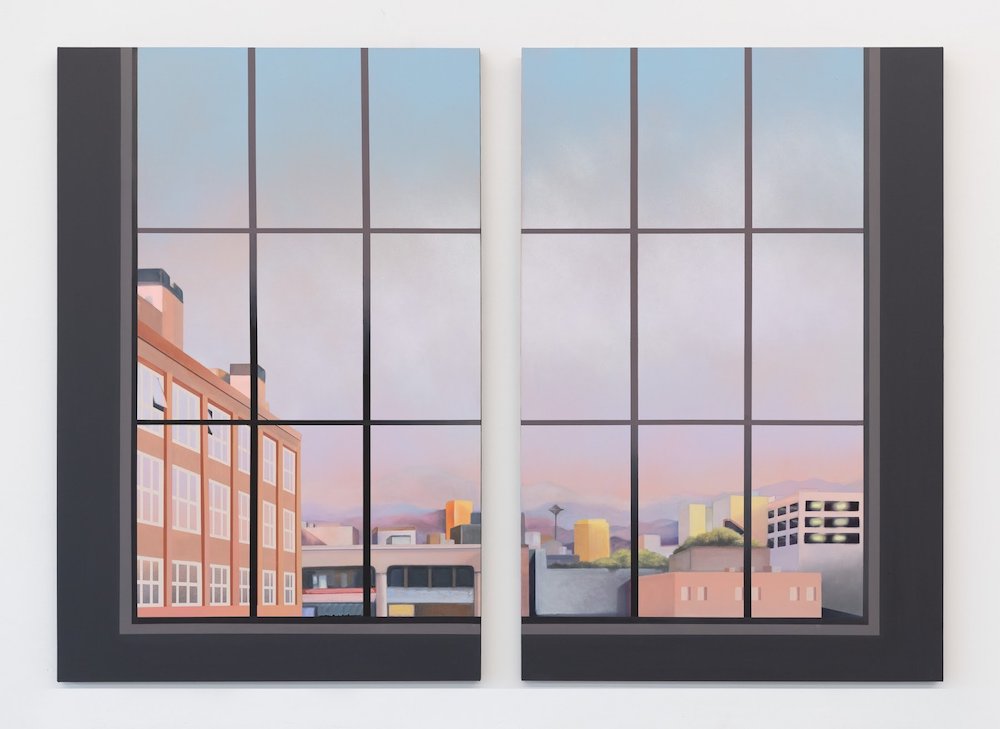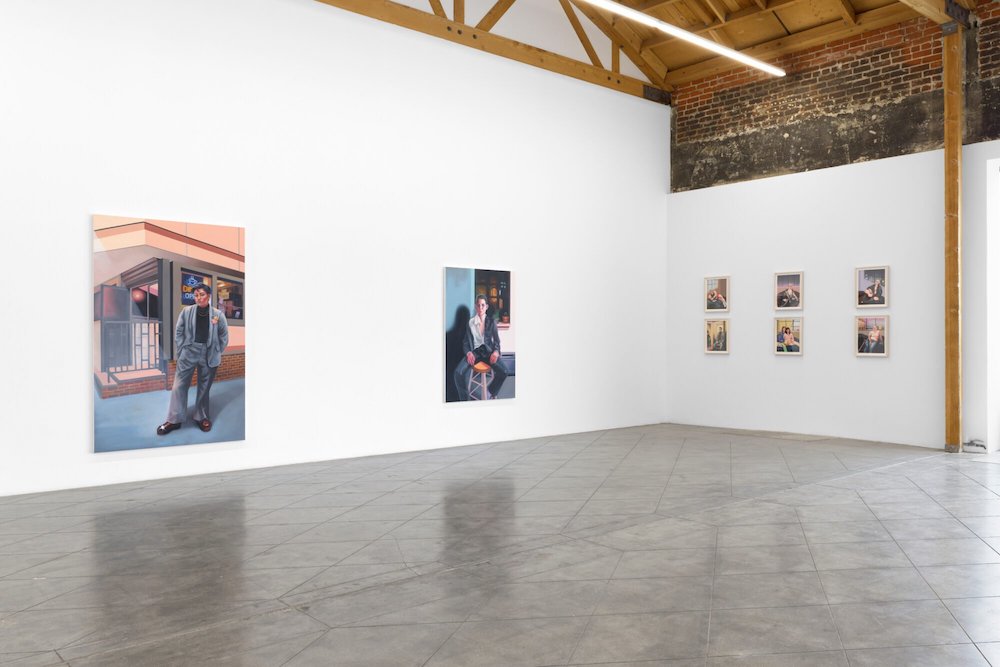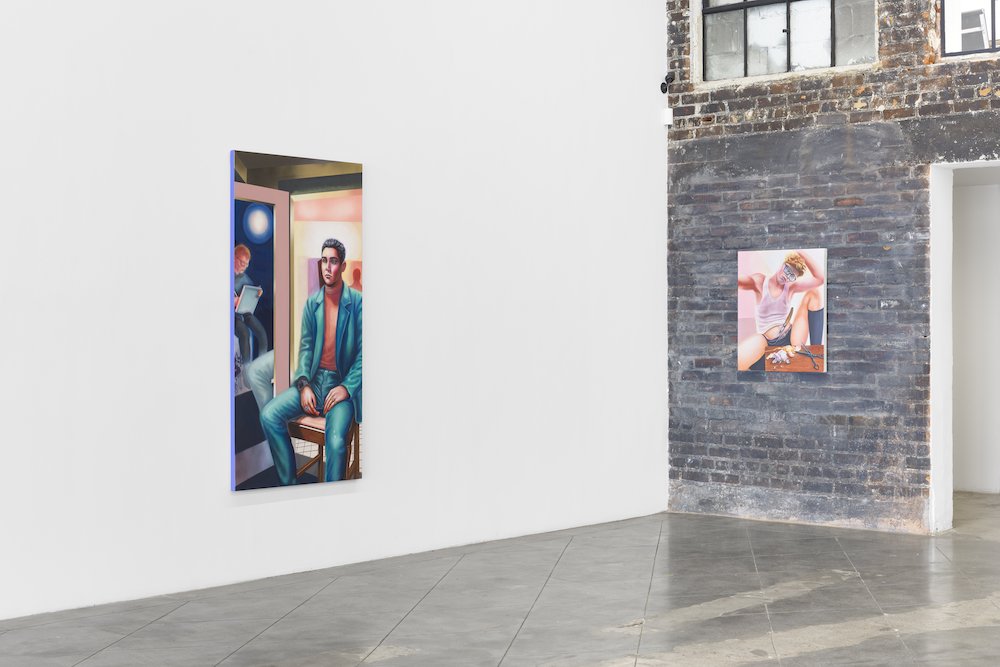Anat Ebgi is pleased to announce a solo exhibition of new works by queer trans-identifying artist Alannah Farrell on view at 4859 Fountain Avenue through May 26. This is their second solo exhibition with the gallery. Farrell paints and pays tribute to their queer friends, lovers, and neighbors in atmospheric, emotional, and brooding environments. Looking for a change of scenery, Farrell has divided their time painting between New York and Los Angeles, with the bulk of this exhibition created in LA.
Conversations around portraiture uncover questions of identity, gaze, style, and expression. Farrell’s work touches on these, but moves confidently into personal questions about the human psyche, gender dysphoria, and selfhood. Describing the emotional connection with their sitters, Farrell states, “whatever time we share in the studio filters into my excitement in doing the work, solidifying my dedication to portray people imbued with life.” The works are charged with a complex tenderness, revealing an intimacy and trust between artist and sitter. Farrell presents these queer individuals through a lens of understanding and connection, a context shielded from a society eager to erase or enact violence.
Farrell’s process is informed by art historical traditions. Each work is executed using a classical grisaille underpainting before the glazing layers introduce pastel haze and traveling light. These paintings depict more than a moment, rather time itself unfurling before our eyes—shifting light, shifting weight, the emergence of the inner world. Furthermore, Farrell paints thoughtfully and attentively from life. They describe the process of inviting sitters into the studio as an adrenaline rush—having to work with time as a restriction and the challenge of attempting to capture what is full of life and motion into a singular image.
Place plays a conceptual role in Farrell’s work for this exhibition. Their titling strategy follows a pattern of naming the sitter, followed by a location set inside parenthesis such as Study for Al (Madonna Inn), or X (Pearl Street). Although portraiture remains the artist’s primary subject matter, two works depict the artist’s empty studio—pseudo self-portraits. The distinct qualities of each spark a tension and reveal something of the inner world of the artist. A small cramped New York studio with an arched window evokes a psychological compression. Contrasted by the diptych of Farrell’s Los Angeles studio with a view toward the San Gabriel mountains nested between parking structures and buildings of downtown, the work is blanketed with light and expansive sky, evoking feelings of emergence and openness.

